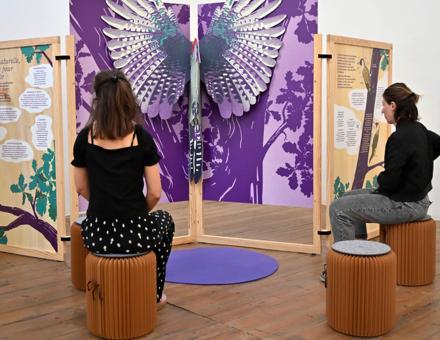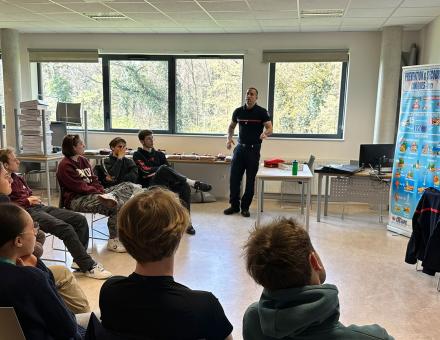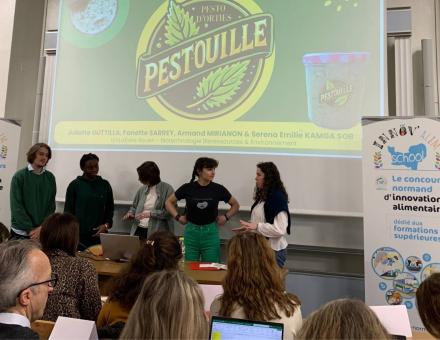For eleven years, students in Geosciences & Environment have been studying the abbey of Conques in the framework of their thesis of initiation to research.
Year after year, the abbey of Sainte-Foy de Conques is the site of the 3rd and 4th year Geosciences and Environment MSc students. For the past eleven years, a dozen pairs of students have chosen this site as the subject of their introductory research thesis. And the year 2022-2023 is no exception, with two pairs coming to unravel the mysteries of this building, a major stop on the road to Compostela and a major work of Romanesque art.
What does this have to do with geology? "In addition to its heritage and spiritual dimension, it is a very rich church from the petrographic point of view," explains Jean-David Vernhes, a associate professor in geotechnics and supervisor of the two pairs, along with Renaud Toullec, a associate professor in sedimentology. "It is an excellent support for introductory research theses, the objective of which is to train students in the methods and rigor of scientific research."
After a bibliographic study, the two pairs of students went to Aveyron last September to carry out their fieldwork. This was an important step in gathering the essential data that they will have to process and exploit.
As part of their dissertation, Baptiste De Villoutreys and Mathieu Paulin are continuing their investigation into the stones used to build the abbey church. Their objective? To identify the sedimentary rocks used and find their origin, especially the two non-native facies. This research allows them to understand the relationship of the building to its territory.
The second subject deals with the distribution of the different types of stones in the structure of the church. This work led Axelle Piras and Rémi Guérin to digitally represent the abbey church in 3D with the aim of creating an "augmented reality" model to bring out the nature of the stones better than with the naked eye, thanks to GeoLab software. The information is likely to interest historians and archaeologists, but also tourism actors via the future heritage interpretation center of Conques.
The two works were the subject of a conference this Friday, May 12th at the auditorium of Conques-en-Rouergue. Axelle Piras and Mathieu Paulin, with the help of Jean-David Vernhes, presented to the public the main results of their research during three semesters of work. The event was a great success, with nearly 70 people attending, including the mayor of Conques and his first deputy, a departmental councillor, the honorary architect of the Bâtiments de France of Aveyron, scholars from local learned societies, and business leaders from the heritage field, all of whom were very interested.

In addition to their pedagogical character for our geoscience students, this research work contributes to the development of a heritage and its territory. In this respect, the work carried out by UniLaSalle through the students' dissertations has benefited from the financial support of the Conques-Marcillac Community of Municipalities since the beginning. The abbey church of Sainte-Foy de Conques has been classified as a UNESCO site for more than 20 years, but the commune now hopes to obtain the Grand Site de France label for the village and its environment. Its partnership with UniLaSalle should help.






